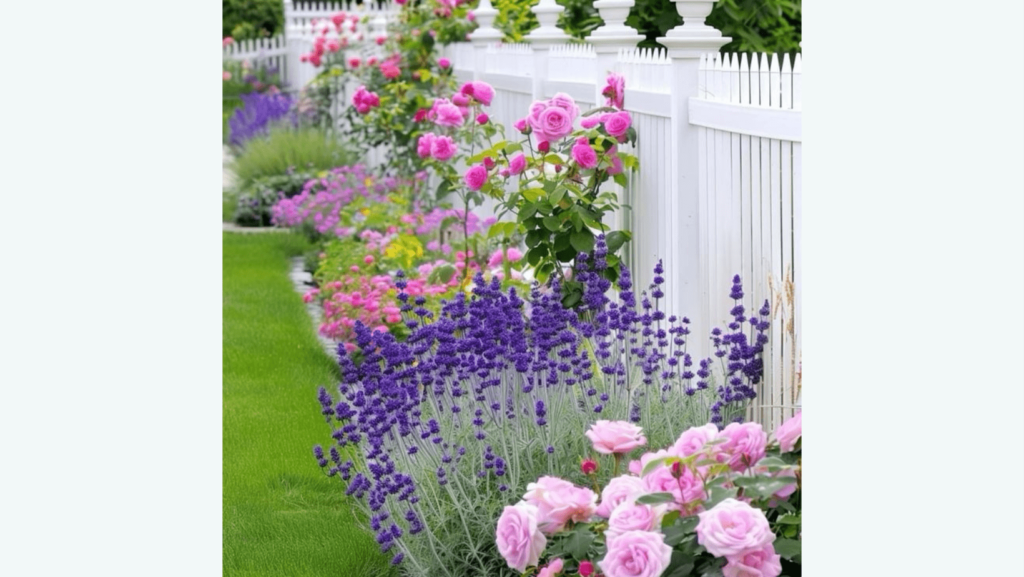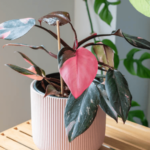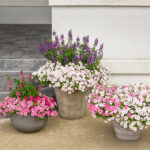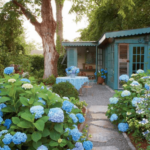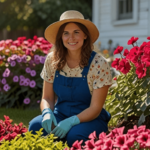Understanding Salvia Flowers
A. Types of Salvia plants
Salvia, also known as sage, is a diverse genus with over 900 species. Here are some popular varieties:
- Salvia officinalis (Common sage)
- Salvia splendens (Scarlet sage)
- Salvia nemorosa (Woodland sage)
- Salvia farinacea (Mealy sage)
- Salvia leucantha (Mexican bush sage)
Each type offers unique characteristics, from culinary uses to ornamental appeal. Here’s a comparison of their features:
| Salvia Type | Flower Color | Height | Hardiness Zones |
|---|---|---|---|
| S. officinalis | Purple-blue | 1-2 ft | 5-9 |
| S. splendens | Red, pink, purple | 1-3 ft | 10-11 |
| S. nemorosa | Purple, blue, pink | 1-3 ft | 4-8 |
| S. farinacea | Blue, purple | 2-3 ft | 8-10 |
| S. leucantha | Purple, white | 3-4 ft | 8-10 |
RELATED BLOG
- 7-Impatiens Indoor Growing Mistakes To Avoid This Season
7-Tricks to Prune,Propagate and Fertilize Incrediball Hydrangea Plant
B. Optimal growing conditions
To ensure your Salvia grow, provide:
- Full sun to partial shade
- Well-draining soil
- Moderate watering
- Regular pruning
C. Bloom cycle and duration
Salvia’s bloom cycle varies by species, but generally:
- Most varieties bloom from late spring to early fall
- Peak blooming occurs in mid-summer
- Some species can bloom for 6-8 weeks or longer
To maximize blooming:
- Deadhead spent flowers regularly
- Provide adequate nutrients
- Maintain a proper watering schedule
Preparing for a Season-Long Bloom

A. Choosing the right Salvia variety
Selecting the appropriate Salvia variety is crucial for ensuring a long-lasting bloom. Consider factors such as your climate, available sunlight, and desired bloom color. Some popular varieties for extended blooming include:
- Salvia greggii (Autumn Sage)
- Salvia microphylla (Hot Lips)
- Salvia guaranitica (Blue Anise Sage)
B. Ideal planting time and location
For optimal growth and blooming, plant Salvia in:
- Spring or early summer
- Full sun to partial shade
- Well-draining soil
| Planting Time | Benefits |
|---|---|
| Spring | Allows establishment before summer heat |
| Early Summer | Quick growth in warm temperatures |
C. Soil preparation techniques
Prepare your soil to provide the best environment for Salvia:
- Test soil pH (aim for 6.0-7.0)
- Add organic matter for improved drainage
- Incorporate slow-release fertilizer
- Ensure proper soil depth (at least 12 inches)
D. Companion plants for enhanced growth
Pair Salvia with complementary plants to boost overall garden health:
- Lavender: Attracts pollinators
- Echinacea: Provides visual contrast
- Yarrow: Helps retain soil moisture
Essential Care Tips to Grow Salvia
A. Watering Requirements

Salvia plants prefer well-draining soil and moderate watering. Follow these guidelines:
- Water deeply but infrequently
- Allow soil to dry between waterings
- Avoid overwatering to prevent root rot
B. Fertilization Schedule
Proper fertilization is crucial for maintaining healthy salvia plants:
- Apply a balanced, slow-release fertilizer in early spring
- Feed with a liquid fertilizer every 4-6 weeks during the growing season
- Reduce fertilization in late summer to prepare for dormancy
C. Pruning and Deadheading Techniques
Regular pruning and deadheading encourage continuous blooming:
- Pinch back new growth in spring to promote bushiness
- Remove spent flowers promptly to stimulate new blooms
- Trim back by 1/3 after the first flush of flowers to encourage a second bloom
D. Pest and Disease Management
Keep your salvia healthy by addressing common issues:
| Pest/Disease | Symptoms | Treatment |
|---|---|---|
| Whiteflies | Tiny white insects on leaf undersides | Use insecticidal soap or neem oil |
| Powdery Mildew | White, powdery coating on leaves | Improve air circulation and apply fungicide |
| Root Rot | Wilting, yellowing leaves | Improve drainage and reduce watering |
Extending the Blooming Period of Salvia Flower
Succession Planting Strategies
Succession planting is a key technique to maintain continuous blooms. Here’s how to implement it effectively:
- Plant Salvia varieties with different blooming times
- Stagger planting dates by 2-3 weeks
- Replace spent plants with new seedlings
| Planting Time | Early Bloomer | Mid-Season Bloomer | Late Bloomer |
|---|---|---|---|
| Early Spring | S. greggii | S. nemorosa | S. guaranitica |
| Late Spring | S. coccinea | S. farinacea | S. leucantha |
| Early Summer | S. microphylla | S. ‘Hot Lips’ | S. elegans |
Temperature Regulation Methods
Maintaining optimal temperatures can significantly extend the blooming period:
- Use mulch to regulate soil temperature
- Provide shade during peak heat hours
- Use row covers for cold protection
- Consider container planting for easier temperature control
Light Exposure Optimization
Proper light exposure is crucial for prolonged blooming:
- Ensure 6-8 hours of direct sunlight daily
- Rotate potted Salvias to prevent uneven growth
- Use reflective surfaces to increase light in shaded areas
- Consider supplemental lighting for indoor or greenhouse cultivation
Overwintering Techniques for Perennial Varieties

To ensure robust blooms year after year, employ these overwintering techniques:
- Cut back foliage after first frost
- Apply a thick layer of mulch for insulation
- Protect roots with burlap wrapping
- For container plants, move to a sheltered location
By implementing these strategies, you can significantly extend your Salvia’s blooming period, creating a long-lasting, colorful display in your garden.
Troubleshooting Common Salvia Issues
Even with proper care, Salvia plants may encounter some issues. Here’s how to address common problems:
A. Addressing stunted growth
Stunted growth in Salvia can be caused by various factors:
- Insufficient sunlight
- Poor soil conditions
- Overwatering or underwatering
- Nutrient deficiencies
To resolve this issue:
- Ensure your Salvia receives at least 6 hours of direct sunlight daily
- Improve soil drainage by adding organic matter
- Adjust watering frequency based on soil moisture
- Apply a balanced, slow-release fertilizer
B. Resolving leaf discoloration
Leaf discoloration can indicate several problems:
| Discoloration | Possible Cause | Solution |
|---|---|---|
| Yellowing | Overwatering or nutrient deficiency | Adjust watering schedule or apply balanced fertilizer |
| Brown edges | Underwatering or sunburn | Increase watering frequency or provide partial shade |
| Purple tint | Phosphorus deficiency | Apply phosphorus-rich fertilizer |
C. Dealing with blossom drop
Blossom drop can be frustrating for gardeners. Common causes include:
- Extreme temperatures
- Irregular watering
- Pest infestations
To prevent blossom drop:
- Protect plants from extreme heat or cold
- Maintain consistent soil moisture
- Monitor for pests and treat promptly with appropriate methods
D. Managing leggy or sparse plants
Leggy or sparse Salvia plants often result from:
- Insufficient light
- Overfertilization
- Lack of pruning
To correct this issue:
- Move plants to a sunnier location if possible
- Reduce fertilizer application
- Regularly pinch back growing tips to encourage bushier growth
- Prune plants back by one-third in early spring
By addressing these common issues promptly, you can help your Salvia plants maintain their health and beauty throughout the growing season. Regular monitoring and appropriate care will ensure your Salvia continues to thrive and produce abundant blooms.
Keeping your Salvia flowers blooming throughout the season requires a combination of proper preparation, essential care, and strategic techniques. By understanding the unique needs of Salvia plants and implementing the right care practices, you can enjoy their vibrant blooms for an extended period. From selecting the ideal location and soil to providing adequate water and nutrients, each step plays a crucial role in ensuring your Salvia thrives.
FAQS
Do salvia flowers bloom all summer?
Many salvia varieties do bloom all summer. However, the specific blooming period can vary depending on the climate, cultivar, and care provided. Some salvias might experience a brief pause in flowering during extremely hot or dry conditions, but they typically resume blooming once conditions improve.
- Salvia splendens: Annual, vibrant red flowers, blooms all summer.
- Salvia nemorosa: Perennial, purple or blue flowers, blooms for weeks.
- Salvia greggii: Perennial, various colors, blooms from spring to fall.
How do you take care of salvia in the summer?
- Salvia’s Summertime Maintenance:
- Salvia adores the full sun. Make sure your plants get 6 to 8 hours of direct sunlight each day.
- Watering: Make sure to water frequently, particularly in hot, dry weather. The soil should always be somewhat wet but not drenched. Steer clear of overwatering as this might cause root rot.
- Fertilizing: During the growing season, fertilize your salvia every four to six weeks with a balanced fertilizer.
- Deadheading: To promote ongoing blooming and stop self-seeding, remove spent blooms on a regular basis.
- Pruning: To encourage a bushier growth habit and more flowers, trim back your salvia after the first flush of blooms.
- You can encourage your salvia plants to flourish and yield lovely blooms all summer long by paying attention to these instructions.
Do rabbits eat salvia?
Yes, rabbits often enjoy eating salvia. They are particularly fond of the leaves and flowers of many salvia varieties. If you have rabbits in your area, you may need to take steps to protect your salvia plants, such as using rabbit-proof fencing or repellents.
What is the prettiest salvia?
The “prettiest” salvia is subjective and depends on personal preference. However, some popular choices for their striking appearance include:
- Salvia splendens (Annual Salvia): Known for its vibrant red flowers, but also available in other colors like pink, purple, and orange.
- Salvia nemorosa (Meadow Sage): Offers a range of colors, including purple, blue, and white, with tall flower spikes.
- Salvia greggii (Texas Ranger): Known for its colorful blooms in shades of red, pink, purple, and white, often with contrasting throats.
- Salvia officinalis (Common Sage): While primarily used as a culinary herb, it also produces beautiful purple flowers.
- Salvia elegans (Pineapple Sage): Offers unique pineapple-scented leaves and vibrant red tubular flowers.

